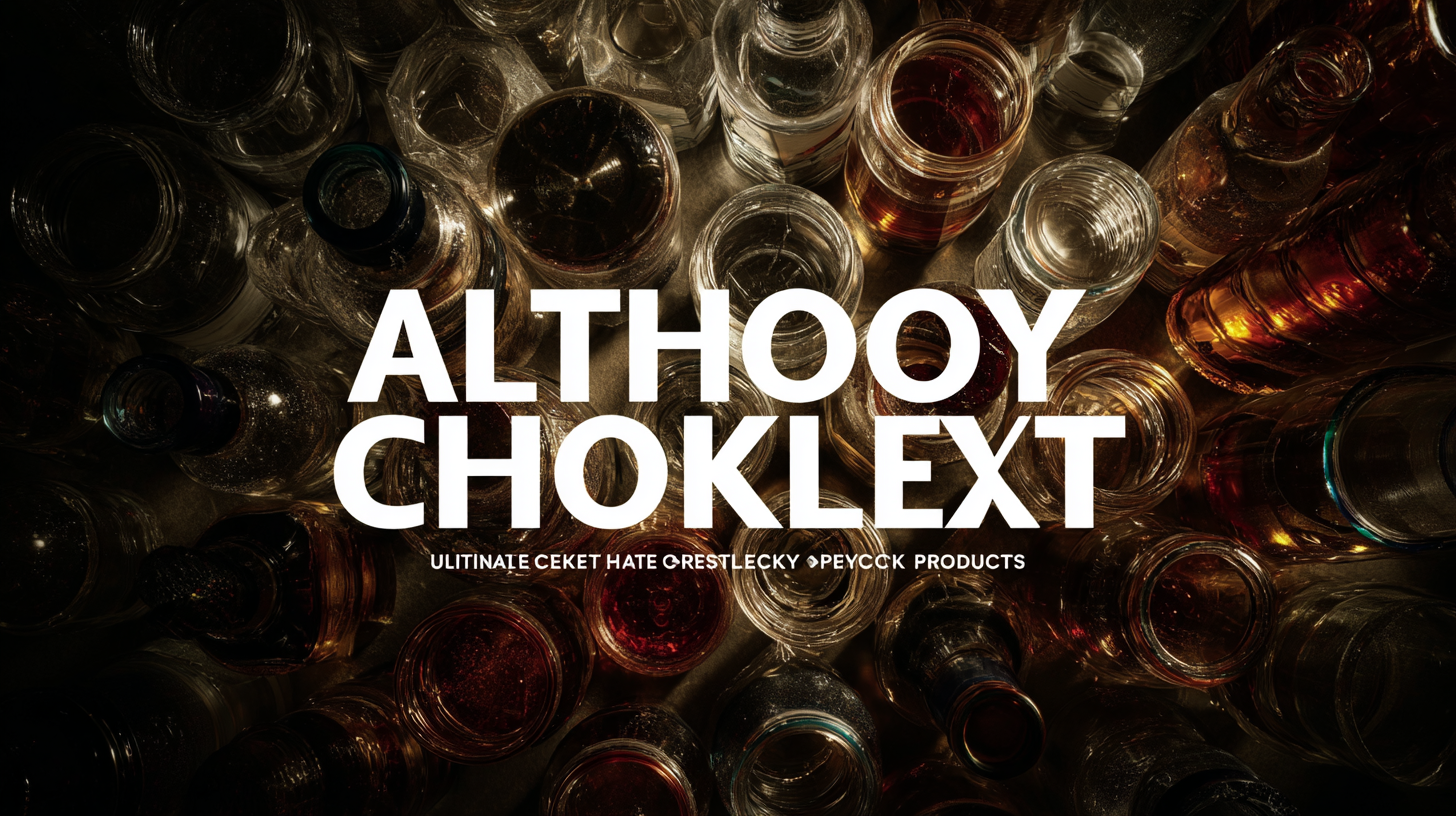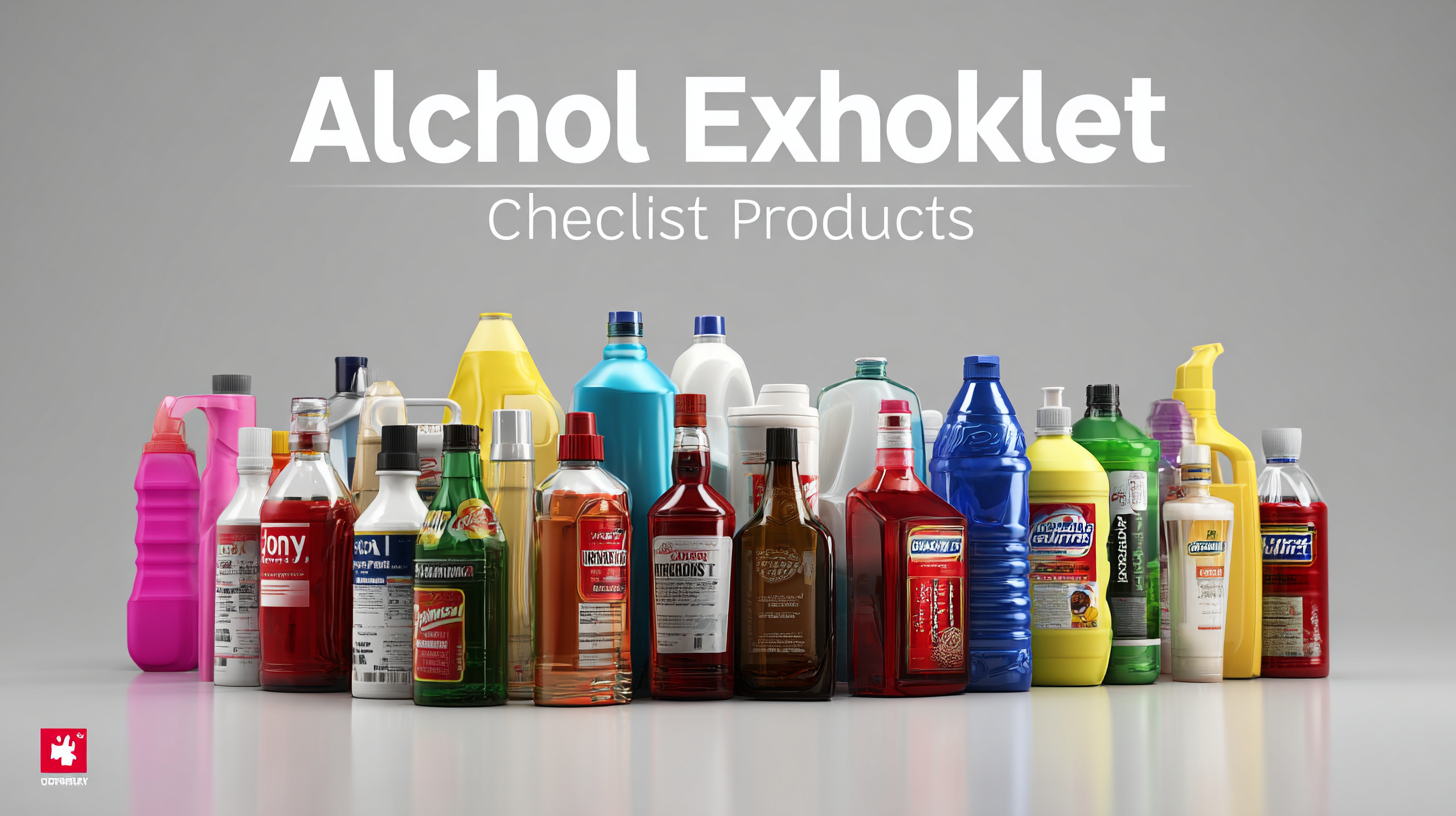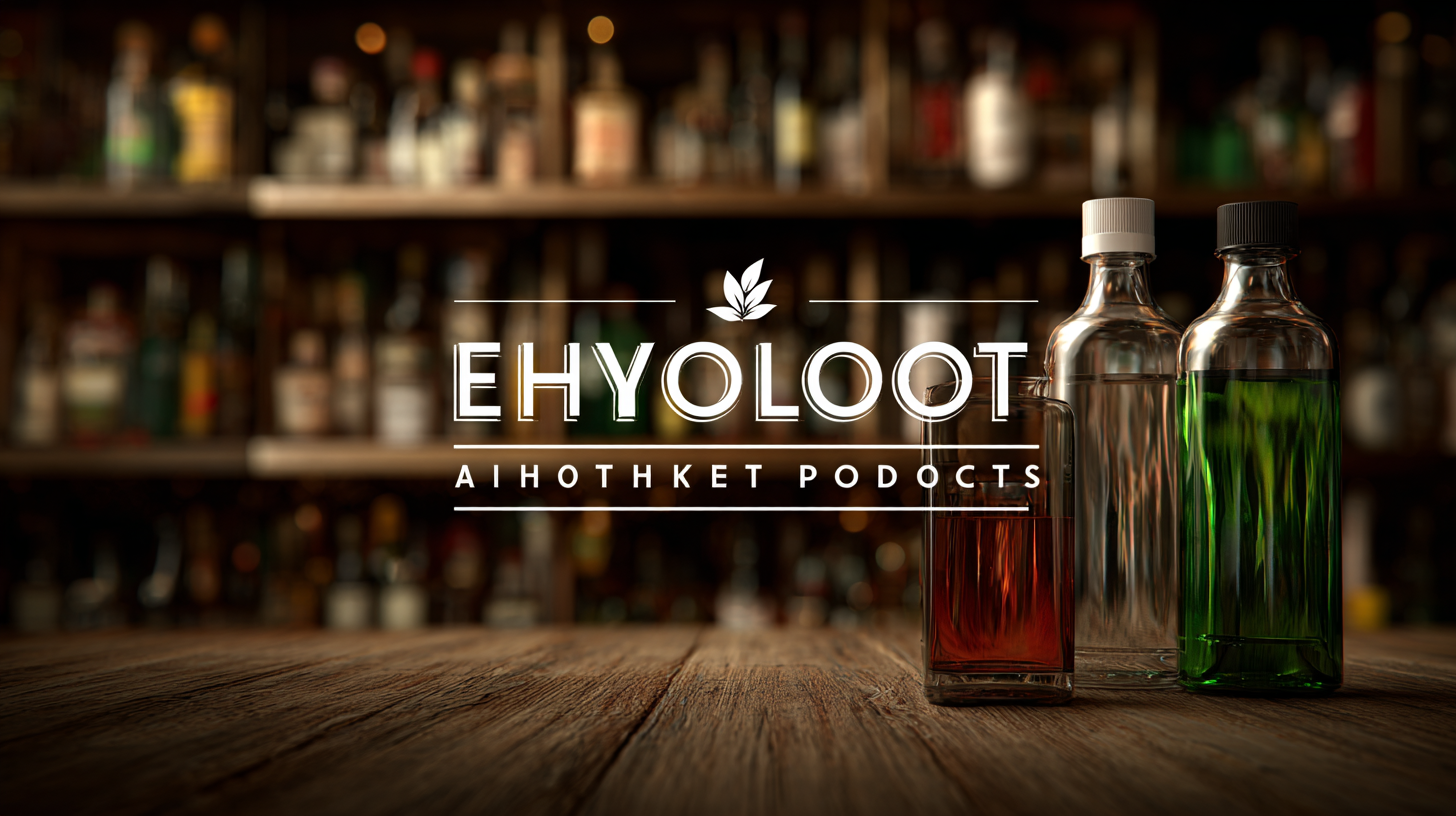
Ultimate Checklist for Selecting the Best Alcohol Ethoxylate Products for Your Needs
In the evolving landscape of industrial and consumer products, selecting the right Alcohol Ethoxylate Products is crucial for achieving optimal performance and sustainability. According to a report by MarketsandMarkets, the global alcohol ethoxylate market is projected to reach USD 4.1 billion by 2025, driven by its versatile applications in detergents, personal care products, and industrial cleaners. These non-ionic surfactants are favored for their ability to enhance water solubility and improve cleaning efficiency, making them indispensable in various formulations.
However, with a plethora of options available, it becomes imperative to establish a comprehensive checklist that addresses specific requirements and application needs. This guide aims to assist businesses and consumers alike in identifying the best Alcohol Ethoxylate Products tailored to their unique demands, ensuring they make informed and effective purchase decisions.

Importance of Alcohol Ethoxylates in Modern Industrial Applications
Alcohol ethoxylates have emerged as essential components in various modern industrial applications, primarily due to their versatility and effectiveness as surfactants. According to a study published by Allied Market Research, the global alcohol ethoxylate market is projected to reach $8.4 billion by 2025, driven by growing demand from sectors such as personal care, home care, and industrial cleaning. Their ability to reduce surface tension and enhance solubility makes them invaluable for formulating detergents, emulsifiers, and dispersants.
In the personal care industry, for instance, alcohol ethoxylates play a crucial role in the formulation of shampoos and lotions, where their mildness and effectiveness help improve product stability and performance. Research from the American Cleaning Institute highlights that these compounds can significantly enhance the cleaning power of formulations, resulting in more efficient product use and reduced environmental impact. Furthermore, their biodegradability offers a compelling advantage in meeting stringent regulatory requirements and consumer preferences for sustainable products, solidifying their importance in maintaining industry competitiveness.
Ultimate Checklist for Selecting the Best Alcohol Ethoxylate Products for Your Needs - Importance of Alcohol Ethoxylates in Modern Industrial Applications
| Property | Description | Typical Applications | Environmental Impact | Biodegradability |
|---|---|---|---|---|
| Hydrophilic-Lipophilic Balance (HLB) | Measures the affinity for water vs. oil, indicating solubility in both. | Surfactants, detergents, emulsifiers. | Can vary; consideration of aquatic toxicity is necessary. | Generally biodegradable; specifics depend on the structure. |
| Chain Length | Length of alkyl chain affects solubility and surface tension reduction. | Personal care products, industrial cleaners. | Longer chains may have a higher environmental persistence. | Impact varies; shorter chains are typically more biodegradable. |
| Purity Level | Refers to the concentration of active ingredients versus impurities. | Manufacturing, textile applications. | High purity levels tend to have less negative impact. | Higher purity usually promotes better biodegradability. |
| Viscosity | Measurement of a fluid's resistance to flow; affects application ease. | Lubricants, detergents. | Can impact aquatic systems if excessive. | Middle range viscosity often preferred for biodegradability. |
| pH Stability | The pH range in which the product remains effective without degradation. | Cosmetics, food processing. | Stability in pH is vital for minimizing environmental risk. | Stable pH conditions contribute to biodegradable performance. |
Key Performance Indicators for Evaluating Alcohol Ethoxylate Products
When selecting the best alcohol ethoxylate products, understanding key performance indicators (KPIs) is crucial to ensuring you make an informed decision. One vital KPI is the cloud point, which indicates the temperature at which the ethoxylate becomes cloudy and starts to separate. This property affects solubility in various formulations, particularly in applications involving detergents and cleaning agents. A lower cloud point generally signifies better performance in cold water applications, making it an essential factor for companies focused on sustainability.
Another important KPI to consider is the hydrophilic-lipophilic balance (HLB) value. This parameter helps in determining the surfactant's effectiveness for specific applications by measuring its affinity for water versus oils. Products with a higher HLB are more effective as emulsifiers, while those with a lower HLB excel in wetting and dispersing tasks. Evaluating the HLB value alongside the application type can significantly enhance product performance and efficiency, enabling users to achieve optimal results tailored to their specific needs.
Understanding the Global Market Trends for Alcohol Ethoxylates
The global market for alcohol ethoxylates has shown remarkable growth, driven by increasing demand across various industries such as personal care, household cleaning, and textiles. According to a recent report by ResearchAndMarkets, the alcohol ethoxylate market is projected to reach approximately USD 5 billion by 2025, with a compound annual growth rate (CAGR) of around 6.2% from 2020 to 2025. This growth is largely attributed to the rising awareness of environmentally friendly and biodegradable surfactants, as industries shift towards sustainable practices.

Furthermore, the demand for non-ionic surfactants, a category under which alcohol ethoxylates fall, is expected to increase significantly. A comprehensive study by Global Market Insights highlights that the Asia-Pacific region is forecasted to exhibit the highest growth rate, fueled by rapid industrialization and urbanization in countries like China and India. As manufacturers seek to enhance product performance while adhering to safety and regulatory standards, understanding these global market trends becomes essential for businesses and consumers aiming to select the best alcohol ethoxylate products tailored to their specific needs.
Factors Influencing the Quality of Alcohol Ethoxylates from China
When selecting alcohol ethoxylate products, understanding the factors influencing their quality is paramount, particularly when sourcing from China. Key considerations include the raw materials used, manufacturing processes, and compliance with international quality standards. Research indicates that the purity of fatty alcohols directly impacts the performance and safety of ethoxylates. With increasing scrutiny on production practices, manufacturers adhering to stringent quality control measures are more likely to deliver superior products.
Recent price fluctuations in the Asia-Pacific region, particularly due to rising input costs in early October 2024, further emphasize the necessity of evaluating suppliers. The demand for consistent quality combined with volatile pricing necessitates a keen understanding of market dynamics. To make informed purchasing decisions, it’s advisable to review technical specifications and certifications, ensuring alignment with desired application requirements.
**Tips:** Always request documentation of quality assessments from potential suppliers. Additionally, conducting a comparative analysis of product samples can help identify the most suitable options for your specific applications. Keep abreast of market trends and be ready to adjust your sourcing strategies accordingly.

Sustainability and Compliance: Choosing Eco-Friendly Alcohol Ethoxylate Solutions
In today's market, the demand for eco-friendly products is on the rise, making it essential for businesses to prioritize sustainability in their selection of alcohol ethoxylate solutions. According to a report from MarketsandMarkets, the global market for biodegradable surfactants, which includes alcohol ethoxylates, is projected to reach USD 9.4 billion by 2025, reflecting a compound annual growth rate (CAGR) of 5.8%. This growth highlights the increasing consumer preference for sustainable products and the corporate responsibility to reduce environmental impact.
Moreover, compliance with sustainability standards is crucial for companies aiming to maintain their market position. The European Union's regulations on surfactants, such as the REACH (Registration, Evaluation, Authorization, and Restriction of Chemicals) directive, emphasize the need for transparency and safety in chemical selection. Alcohol ethoxylates that are certified biodegradable not only meet these regulatory requirements but also contribute to lower toxicity in aquatic environments, making them a preferred choice for eco-conscious brands. Companies that invest in these substances are not only meeting compliance standards but also aligning their brand with the growing trend towards sustainability, which can enhance their reputation and customer loyalty.
Ultimate Checklist for Selecting the Best Alcohol Ethoxylate Products
This chart illustrates the evaluation criteria for selecting eco-friendly alcohol ethoxylate solutions, emphasizing sustainability and compliance.
